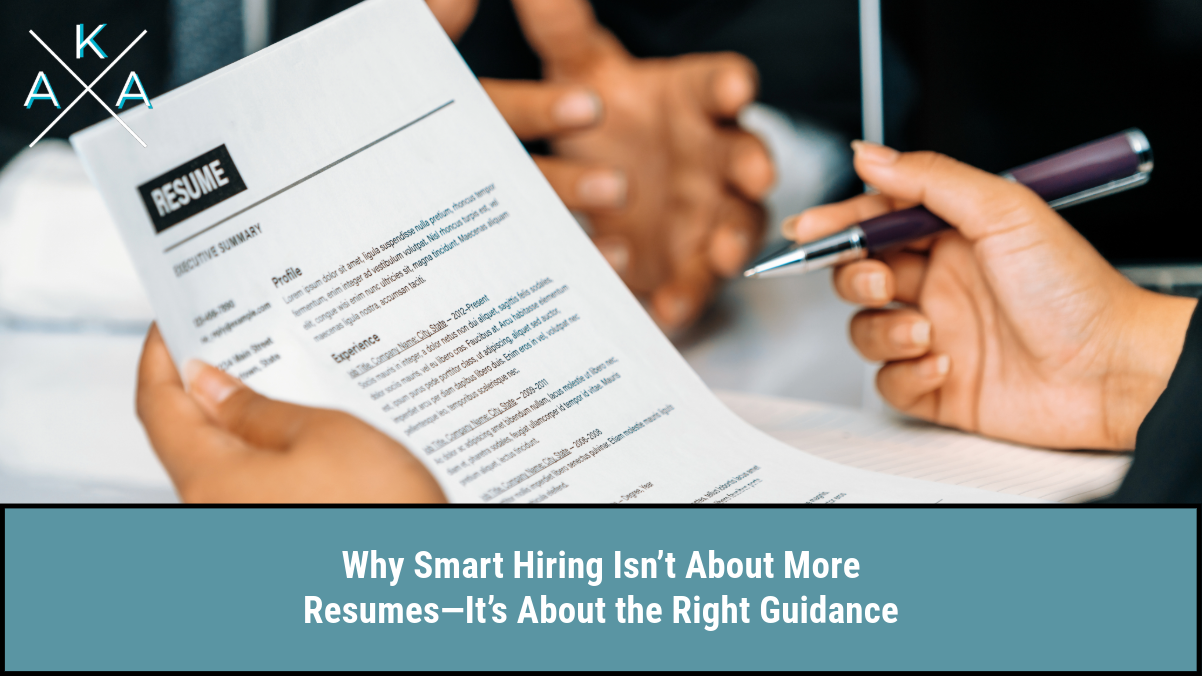Every hiring decision shapes the future direction of a business. Yet, many organizations still measure the strength of their hiring process by the number of resumes they can collect. It may feel reassuring to have a wide pool of candidates, but volume does not equal quality. In fact, too many resumes often become a distraction, making it harder to see the true talent hidden among the stack.
What really drives successful hiring is not sheer numbers—it’s the guidance, process, and strategy behind every decision. Smart hiring comes from knowing what you’re looking for, building clarity around roles, and having the right support system to identify top performers quickly and effectively. Instead of chasing more resumes, companies should focus on refining their approach to talent acquisition.
The Resume Trap: Why More Isn’t Better
For many hiring managers, the instinct is to equate more resumes with more options. But having a flood of applications often creates unnecessary noise. Reviewing hundreds of resumes can lead to decision fatigue, overlooked details, and the false impression that quantity is a sign of progress. In reality, time spent sorting through resumes could be better invested in evaluating the few candidates who are most aligned with the role.
The “resume trap” also fosters a reactive mindset—waiting for candidates to come to you instead of proactively seeking out the right talent. When companies rely on sheer numbers, they risk attracting applicants who are unqualified or uncommitted, which only prolongs the hiring process. Instead of measuring success by resume count, businesses should shift toward smarter strategies that prioritize quality over quantity.
- Decision fatigue: Too many resumes dilute focus and make strong candidates harder to identify.
- False progress: A large applicant pool can feel productive without leading to better hires.
The Role of Guidance in Defining Success
One of the biggest reasons companies stumble in hiring is the lack of clarity about what “success” in the role looks like. Without proper guidance, job descriptions are often vague, leading to mismatched applicants. A recruiting partner or internal advisor can help define the key competencies, cultural alignment, and performance metrics that should shape the hiring process.
Guidance provides the framework to ask better questions, identify non-negotiables, and focus on the long-term impact of a hire. Instead of guessing or relying on surface-level indicators like years of experience, businesses can build a hiring profile that reflects the actual demands of the position. This direction ensures that candidates are evaluated not just on paper but on their ability to thrive within the specific context of the company.
- Clear benchmarks: Defined expectations reduce guesswork during interviews and evaluations.
- Long-term alignment: Guidance ensures hires are chosen for both immediate needs and future growth.
Why Partnerships Outperform Solo Efforts
Hiring is a team sport. Companies that attempt to handle recruitment entirely in-house often find themselves stretched thin, juggling multiple responsibilities while trying to evaluate candidates. Without specialized knowledge, internal teams may miss critical red flags or overlook promising candidates. Partnering with a recruiting firm provides a fresh set of eyes, industry insights, and access to networks beyond your own.
Recruiting partners act as guides through the complexities of the talent market. They streamline processes, pre-screen candidates, and bring proven methods for evaluating both technical skills and cultural fit. This partnership not only saves time but also raises the overall standard of hiring. By leaning on experts, companies can avoid common mistakes and focus on what matters most—choosing the right person for the role.
- Expanded reach: Recruiting partners connect businesses with talent not visible through job boards.
- Efficiency gain: Delegating screening and vetting allows leaders to focus on final decisions.
Turning Guidance Into Smart Hiring Decisions
Guidance in hiring only matters if it is put into action. Too often, companies receive advice but fail to implement it consistently, falling back into old habits of chasing resumes. Smart hiring means embedding guidance into every step of the process—job description writing, interview structure, candidate evaluation, and final decision-making. The result is a streamlined, intentional approach that produces higher-quality hires.
When businesses commit to guided hiring, they stop viewing recruitment as a numbers game and start treating it as a strategic investment. Every hire becomes an opportunity to strengthen the team, drive performance, and build culture. When companies focus on quality rather than volume and stick to a defined strategy, they position themselves to attract and keep top talent.
- Process consistency: Embedding guidance reduces variability in how candidates are assessed.
- Competitive edge: Smart hiring creates stronger teams that outperform competitors over time.
Conclusion
The future of hiring is not about amassing the biggest pile of resumes—it’s about working smarter with the right guidance. Companies that continue to chase numbers risk wasting time, resources, and missing out on the candidates who truly matter. Those that adopt a guided approach, however, create clarity, improve efficiency, and secure talent that fits both their present needs and long-term goals.
If your business is serious about growth, stop asking for more resumes and start asking for the right guidance. That’s the real shortcut to building teams that drive lasting success.


